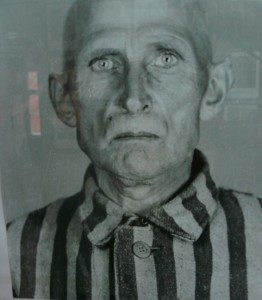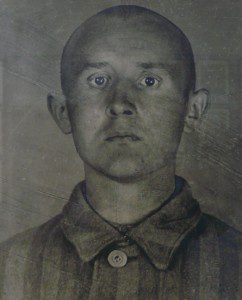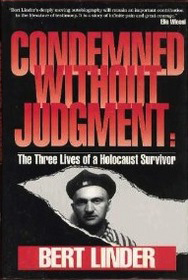
Most of the time, Larry D. Mann was a comedian. In the 1950s, when I met him, Larry would warm up audiences for my father’s television show, The Barris Beat, on CBC. He also appeared in comic sketches on the show. His perfect delivery of punch lines, his deadpan facial expressions and his huge guffaws broke up every audience he ever met. Once, however, Larry Mann made me cry. He described a day in the spring of 1945.
“We weren’t prepared for what we saw when we arrived at the concentration camp,” he said. “We couldn’t get in the front gate because there were bodies, hundreds of bodies, piled up like cordwood. We hadn’t seen the pits yet…”
During the Second World War, Larry Mann served in the Royal Canadian Air Force, but in the final days of the war, he happened to be among those willing to try to assist those in this concentration camp. Larry was also Jewish. “I killed a lot of Jews that day, I guess, by feeding them,” since the emaciated prisoners couldn’t hope to digest the foods their liberators had to offer.

My first real encounter with the story of Nazi concentration camps didn’t occur until 2011, when I visited the museum on the site of Auschwitz. There I met a couple of teachers. At least, I came to know a little of their stories. There’s not much I can relate. They were both Polish. One was named Jan Ciechanowski, born in March 1882. And Jerzy Brem was born in September 1914, as the Great War began. They both came to the area of Poland, around Krakow, in 1941. Or, more correctly, they were brought there, to the small town of Oswiecim, which the German armies then occupied. The Nazis renamed the place Auschwitz. And here’s the way their records summed up those two teachers:
“Jan, number 11193, executed Oct. 29, 1941” and “Jerzy, number 10190, executed August 19, 1942.”
I happened upon their stories because I was leading a Canadian tour group to Krakow that summer and I brought my travelling companions to Auschwitz-Birkenau to meet teachers Jerzy and Jan and several hundred thousand other victims of that reign of terror between 1939 and 1945. The day of our visit, we all passed through the gate with the infamous slogan posted above: “Arbeit Macht Frei” or “Work will make you free.”

And then we entered one of the darkest places on earth, where Hitler’s henchmen herded, imprisoned, starved, tortured and then murdered countless thousands simply because of their ethnic origins, their racial background, their sexual preference, or, in the case of Jerzy and Jan, for being purveyors of knowledge that the Nazis decided had to be exterminated.
As Larry Mann discovered, however, some of the 1.2 million Jewish civilians imprisoned at Auschwitz-Birkenau concentration camp survived.
“I saw a man inside the camp,” Larry continued. “Gaunt. His eyes were sunk, but those eyes were piercing. They looked right through me. … I didn’t think that a body could function with that little on its bones. I saw walking skeletons.
“And it was almost impossible to know the age of a person,” he went on. “At one point I saw a man I thought was 16 or 17. But it turned out he was 30 and it was amazing he’d been able to live that long.”
Years later, at a Survivors of the Holocaust fundraising event in California, Larry said he was walking through the hotel lobby where the event took place. He spotted a man who looked familiar.

“And it was the same man. Our eyes locked. We approached each other. And I said, ‘Have I met you? Are you a survivor?’ We both began to cry and we fell into each other’s arms.”
The Holocaust victim turned out to be Bert Linder, a Jewish man born in Austria, tossed into Bergen-Belsen and Auschwitz concentration camps and a survivor of both. Later an immigrant to the U.S., Linder had fought to force Swiss banks to return gold taken from Jewish prisoners by the Nazis. He recorded his experiences in the book Condemned Without Judgment.
Larry’s description of locking glances with Bert Linder took me back to the photos I’d seen of the two teachers at Auschwitz. Perhaps because he was younger, I saw in Jerzy a look of defiance, and in Jan, perhaps because he had more years, a look of knowing, as if, in spite of what he sensed was about to happen to him, there might be hope of a future better than his present. But it was all snuffed out in a torture chamber, a solitary cell, an executioner’s order and finally the ashes of a crematory oven there at Auschwitz.
Larry Mann and other Allied soldiers liberated Bert Linder and a thousands of others – 70 years ago this week – at Auschwitz-Birkenau and Bergen-Belsen. Bert Linder died at 86 in 2010. Larry Mann died at 91 in 2014.